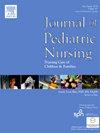Validity and reliability of the pediatric pressure ulcer prediction and evaluation tool in the Turkish population: Comparison with Braden QD-T
IF 2.3
4区 医学
Q2 NURSING
Journal of Pediatric Nursing-Nursing Care of Children & Families
Pub Date : 2025-09-05
DOI:10.1016/j.pedn.2025.08.015
引用次数: 0
Abstract
Aim
To evaluate the validity and reliability of the Pediatric Pressure Ulcer Prediction and Evaluation Tool (PPUPET) in the Turkish population and compare it with Braden QD-T.
Materials and methods
The study was conducted methodologically to test the validity and reliability of PPUPET in Turkish on 228 pediatric patients hospitalized in the pediatric intensive care unit of a public hospital in the Southeastern Anatolia Region of Turkey. Data were collected from pediatric patients and their files who were hospitalized in the pediatric intensive care unit of the hospital under investigation for at least 3 days between July 2023 and October 2023, and using a Personal Information Form, PPUPET, and the Braden QD-T Scale. Kaiser-Meyer-Olkin (KMO) analysis, exploratory factor analysis, and confirmatory factor analysis (CFA) were performed, and CFA fit indices were evaluated to assess the construct validity of the scale. Internal consistency (item-total correlation coefficient and Cronbach alpha value) and interobserver consistency were evaluated as reliability analyses using the parallel form method and ROC curve analysis to evaluate the discriminative feature. Guidelines for reporting reliability and agreement studies (GRRAS) were adhered to in the study.
Results
Half (50.9 %) of the children included in the study were male, 66.7 % were not at risk of pressure injuries according to the Braden QD-T Scale, and 64.9 % were not at risk of pressure injuries according to PPUPET. The content validity index of the scale items for which language validity was evaluated using the Davis method ranged between 0.80 and 1.00, and the content validity ratio was found as 0.92. The KMO coefficient was found as 0.791 and the Bartlett sphericity test χ2 value was 226.354 (p < 0.001). In our study, the Cronbach alpha reliability coefficient was 0.835 and the internal consistency coeffiecient value between observers was 0.992.
Conclusion
In the study, it was determined that PPUPET was a valid and reliable assessment tool for the Turkish population.
土耳其儿童压疮预测和评估工具的有效性和可靠性:与Braden QD-T的比较
目的评价小儿压疮预测与评估工具(puppet)在土耳其人群中的有效性和可靠性,并与Braden QD-T进行比较。材料和方法本研究采用方法学方法,对土耳其安纳托利亚东南部地区一家公立医院儿科重症监护室住院的228名儿童患者进行了土耳其语木偶的效度和信度检验。数据收集于2023年7月至2023年10月期间在调查医院儿科重症监护病房住院至少3天的儿科患者及其档案,使用个人信息表、木偶和Braden QD-T量表。采用Kaiser-Meyer-Olkin (KMO)分析、探索性因子分析和验证性因子分析(CFA),并对CFA拟合指标进行评价,以评估量表的构建效度。采用平行形式法和ROC曲线分析评价判别特征,评价内部一致性(项目-总量相关系数和Cronbach alpha值)和观察者间一致性作为信度分析。本研究遵循报告可靠性和一致性研究指南(GRRAS)。结果纳入研究的儿童中有一半(50.9%)为男性,根据Braden QD-T量表,66.7%的儿童无压力性损伤风险,根据puppet量表,64.9%的儿童无压力性损伤风险。采用Davis方法评价语言效度的量表项目的内容效度指数在0.80 ~ 1.00之间,内容效度比为0.92。KMO系数为0.791,Bartlett球度检验χ2值为226.354 (p < 0.001)。在我们的研究中,Cronbach α信度系数为0.835,观察者之间的内部一致性系数为0.992。结论在研究中,确定了木偶是一个有效和可靠的评估工具,土耳其人。
本文章由计算机程序翻译,如有差异,请以英文原文为准。
求助全文
约1分钟内获得全文
求助全文
来源期刊

Journal of Pediatric Nursing-Nursing Care of Children & Families
NURSING-PEDIATRICS
CiteScore
3.70
自引率
8.30%
发文量
291
审稿时长
65 days
期刊介绍:
Official Journal of the Society of Pediatric Nurses and the Pediatric Endocrinology Nursing Society (PENS)
The Journal of Pediatric Nursing: Nursing Care of Children and Families (JPN) is interested in publishing evidence-based practice, quality improvement, theory, and research papers on a variety of topics from US and international authors. JPN is the official journal of the Society of Pediatric Nurses and the Pediatric Endocrinology Nursing Society. Cecily L. Betz, PhD, RN, FAAN is the Founder and Editor in Chief.
Journal content covers the life span from birth to adolescence. Submissions should be pertinent to the nursing care needs of healthy and ill infants, children, and adolescents, addressing their biopsychosocial needs. JPN also features the following regular columns for which authors may submit brief papers: Hot Topics and Technology.
 求助内容:
求助内容: 应助结果提醒方式:
应助结果提醒方式:


